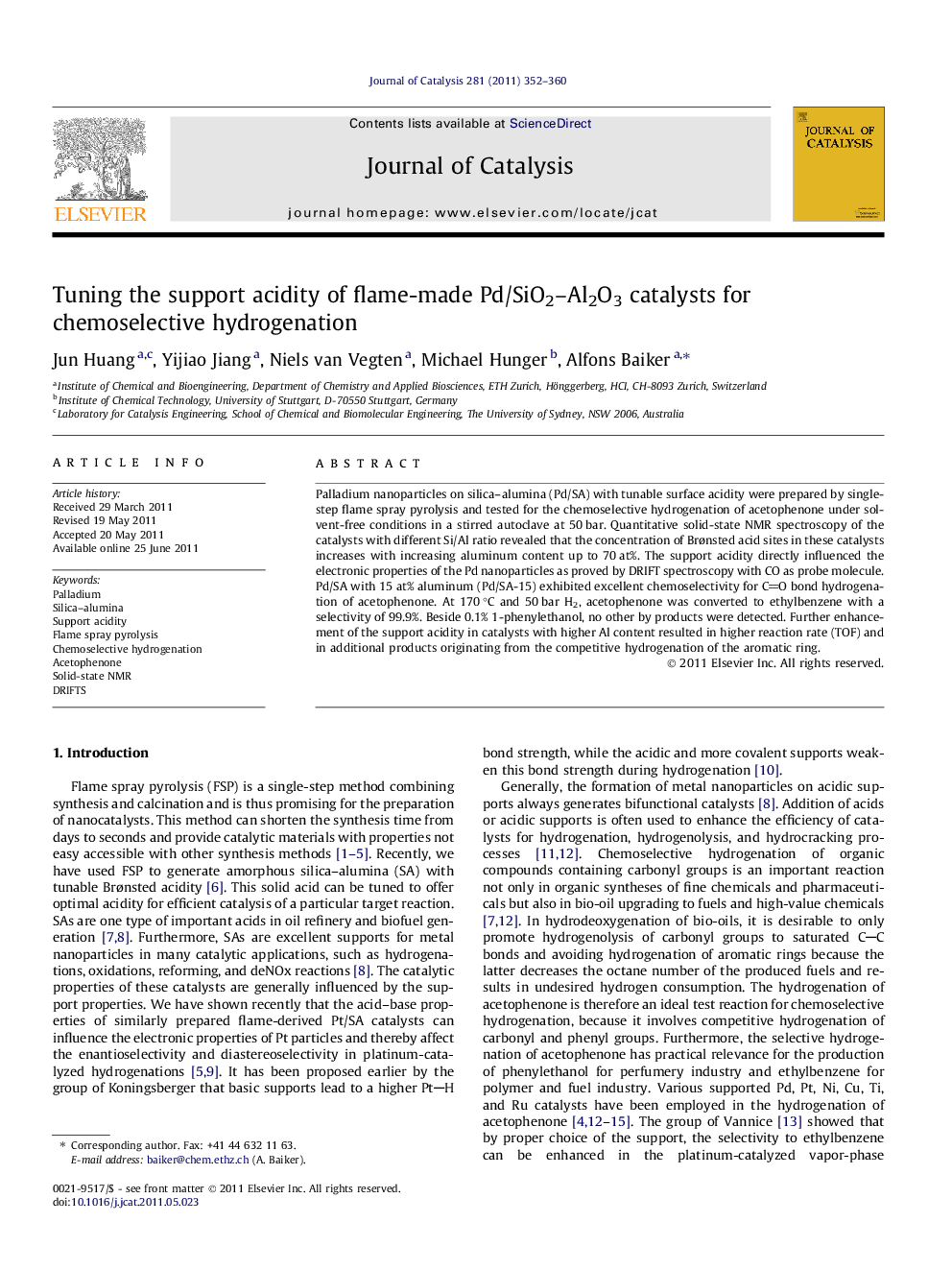| Article ID | Journal | Published Year | Pages | File Type |
|---|---|---|---|---|
| 61686 | Journal of Catalysis | 2011 | 9 Pages |
Palladium nanoparticles on silica–alumina (Pd/SA) with tunable surface acidity were prepared by single-step flame spray pyrolysis and tested for the chemoselective hydrogenation of acetophenone under solvent-free conditions in a stirred autoclave at 50 bar. Quantitative solid-state NMR spectroscopy of the catalysts with different Si/Al ratio revealed that the concentration of Brønsted acid sites in these catalysts increases with increasing aluminum content up to 70 at%. The support acidity directly influenced the electronic properties of the Pd nanoparticles as proved by DRIFT spectroscopy with CO as probe molecule. Pd/SA with 15 at% aluminum (Pd/SA-15) exhibited excellent chemoselectivity for CO bond hydrogenation of acetophenone. At 170 °C and 50 bar H2, acetophenone was converted to ethylbenzene with a selectivity of 99.9%. Beside 0.1% 1-phenylethanol, no other by products were detected. Further enhancement of the support acidity in catalysts with higher Al content resulted in higher reaction rate (TOF) and in additional products originating from the competitive hydrogenation of the aromatic ring.
Graphical abstractDepending on the Si/Al ratio, flame-made Pd/silica–alumina showed tunable acidity, as evidenced by MAS NMR. Catalysts with moderate acidity show high chemoselectivity for hydrogenation of the carbonyl group of acetophenone, while high support acidity favors hydrogenation of the aromatic ring.Figure optionsDownload full-size imageDownload high-quality image (167 K)Download as PowerPoint slideHighlights► Palladium nanoparticles on silica–alumina were prepared by flame spray pyrolysis. ► Acidity of silica–alumina supports was tuned by the content of aluminum. ► Support acidity directly influenced the electronic properties of Pd nanoparticles. ► Chemoselective hydrogenation of CO bond of acetophenone under solvent-free conditions. ► Competitive hydrogenation of aromatic ring on catalysts with high support acidity.
